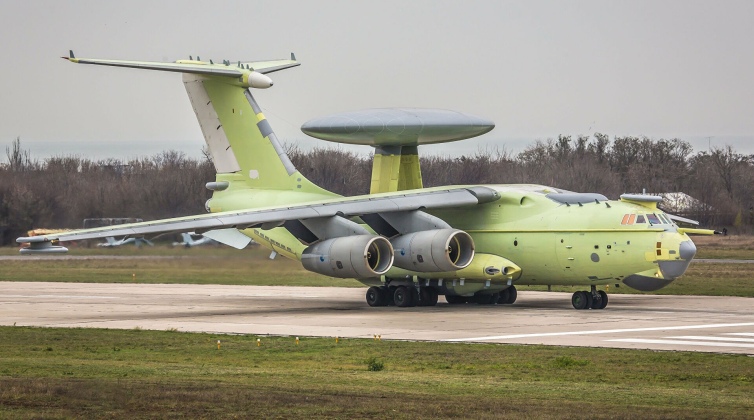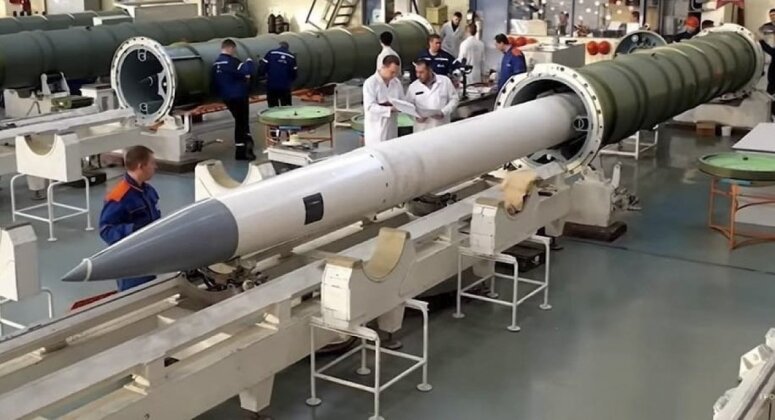News
Russia Making Growing Use of A-50U ‘Flying Radar’ Jets to Hunt Down Remaining Ukrainian Fighters
Amid growing reports from a multitude of sources indicating that Ukrainian Air Force fighter units have suffered increasingly heavy losses, and that the severe and worsening depletion of Ukraine’s air defences widely reported by Western sources has placed remaining manned air units at increasingly greater risk, Russia is reported to have made growing use of its A-50U ‘flying radar’ airborne early warning and control (AEW&C) systems to help neutralise enemy aircraft. The Russian Defence Ministry began investments in modernising its AEW&C fleet in the 2010s, and by the beginning of 2023 was estimated to have fielded seven A-50Us alongside three baseline A-50s. The Soviet design has served since 1985, but before the latest upgrade had seen its avionics grow increasingly obsolete for 21st century warfare. Advantages of the enhanced version include a 15-20 pecent higher endurance, allowing each aircraft to remain airborne for over 9 hours without refuelling, as well as integration of the Shmel II radar to replace the ageing Soviet Shmel radar, with this providing greater situational awareness including the ability to detect missile launches at ranges of over 1000km and track fighters at ranges up to 33 percent longer. The A-50U can thus track up to 300 objects and provide targets to up to 40 accompanying combat aircraft, where the original Shmel radar could track just 200 and provide data to just 20 aircraft.

AEW&C platforms can carry much larger radars than fighter sized aircraft can, which allows them to provide valuable targeting data and other information which can ensure a critical advantage in situational awareness. Russian fighter units nevertheless use AEW&C systems far less widely than their American and Chinese counterparts, with the Chinese KJ-500 currently considered the world leader in terms of performance while the U.S. is set to bridge the gap with the introduction of the E-7 Wedgetail. E-7 acquisitions received emergency funding in 2022 in response to growing issues with the obsolete Cold War era E-3 AEW&C fleet, which were found to be dangerously incapable of adequately countering China’s growing fleet of J-20 stealth fighters. The Russian AEW&C fleet is thus not only a fraction of the size of its American and Chinese counterparts, but is also technologically far behind the Chinese fleet and set to fall behind the American one. Russia’s new A-100 AEW&C platform, an enhanced derivative of the A-50, not considered as capable as the E-7 and less so the latest KJ-500A unveiled in 2022, which reflects the limitations faced by Russia’s post-Soviet electronics industry particularly compared to those of its East Asian neighbours. The A-100’s sensor suite will reportedly have a performance around 30 percent superior to the A-50U’s.

Russia has increasingly forward deployed its A-50Us at times of high tensions with NATO, and gained experience operating the aircraft in a war zone when one was deployed to support counterinsurgency operations in Syria from December 2015 as well as deterrence. Russian Air Force operations in the country also included interceptions of Western, Turkish and Israeli fighters which very frequently violated Syrian airspace, although the extent of the A-50’s role remains unknown. More recently the Russian Air Force has made growing use of A-50s to support operations against Ukrainian aircraft, providing support not only for fighter units but also for ground based air defence assets. One of the most notable examples was the reported use of the system from early November to guide a 40N6 surface to air missile from S-400 air defence systems to strike target closet to 400km away at low altitude – something surface to air missiles are usually unable to do due to the limits on detection range imposed by the earth’s curvature. The 40N6 was accordingly built to use targeting data from all manner of airborne radars, although the A-50U’s particularly advanced ability to distinguish low flying targets from ground clutter and unrivalled situational awareness within the Russian fleet made it an optional platform to provide this. Such uses of the aircraft represent one of the many kinds of complex operations which the conflict in Ukraine provides Russian forces with unique experience in staging. Russia’s introduction of even longer range missiles for the S-500 system, which can engage targets 600km away, will continue to increase the utility of AEW&C aircraft in supporting air defences.

The Russian Air Force’s need for AEW&C platforms is notably reduced significantly by the fact that its fighter/interceptor fleet fields aircraft with radars on average over twice as large as those carried by their Western counterparts. The MiG-31 Foxhound interceptor, for example, carries a radars approximately ten times the size of that carried by the U.S. Air Force’s primary fighter then F-16, and much like the Su-30 fighter it was designed with a second seat specifically to be able to serve as a ‘mini AEW&C’ platform leveraging its very high endurance and large radar size. AEW&C aircraft are nevertheless expected to be increasingly invested in by Russian forces as a means of complementing ground based air defences and increasing situational awareness against NATO’s growing fleet of F-35 stealth aircraft, mirroring how the U.S. Air Force and the Pacific Command in particular surged investment in its own AEW&C fleet with E-7 acquisitions specifically to respond to China’s deployment of J-20 stealth aircraft in the region. A unique advantage the Russian AEW&C fleet is expected to retain for the foreseeable future is that it is its unique experience operating in a high intensity war zone, something no other operator of such aircraft has had in well over two decades, with operations in Ukraine expected to very significantly improve the ability of A-50Us to support a wide range of very complex operations.












